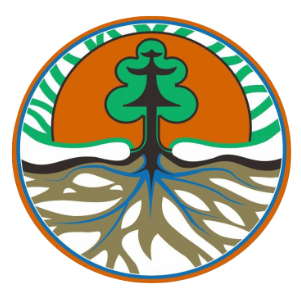
We reanalyzed long-term field data of CO2 flux, including net ecosystem CO2 exchange (NEE), ecosystem respiration (RE), and soil CO2 efflux (RS) to examine their seasonal and interannual variations for three conditions of disturbance (almost undrained peat swamp forest (PSF), drained PSF, and drained burnt ex-PSF) in a tropical peat area in Central Kalimantan, Indonesia. In addition, we simulated the CO2 flux on a monthly basis using empirical equations shown by our previous studies under four scenarios of seasonal variations in groundwater levels (GWL). The GWL has a large interannual variation in October and November. The rainy season usually begins in October, but the onset is delayed until November in El Niño years, making the interannual variation in CO2 fluxes the largest in these 2 months owing to the large GWL variations. On an annual basis, minimum monthly-mean GWL explained 82 % of interannual variations in NEE for the two PSFs. The linearity suggests that 10-cm drawdown of minimum monthly-mean GWL increases NEE or net ecosystem CO2 emission by 48.5 gC m−2 year−1 from PSF, independently of drainage degree. It can be said that minimum monthly-mean GWL is a practical measure to assess annual NEE of PSF.
Download:
 file
file

- Authors: Hirano, T., Sundari, S., Yamada, H.
- Author Affiliation: Hokkaido University, Indonesian Institute of Sciences (LIPI)
- Subjects: carbon balance, carbon dioxide, gas exchange, groundwater level, soil respiration, soil carbon
- Publication type: Chapter
- Source: Osaki, M., Tsuji, N. (eds). 2016. Tropical Peatland Ecosystems. 329-337
- Year: 2016
- ISSN: 978-4-431-55681-7
- DOI: https://doi.org/10.1007/978-4-431-55681-7_21
















